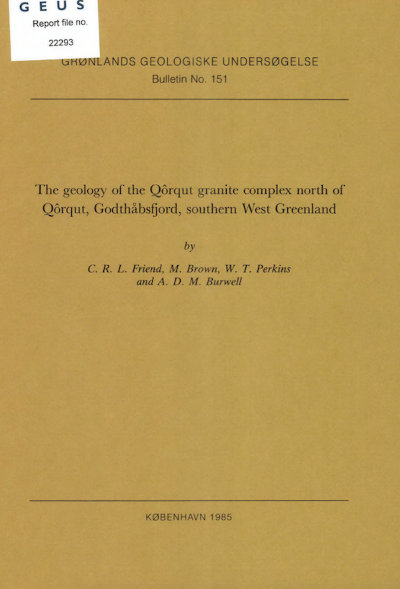The geology of the Qôrqut granite complex north of Qôrqut, Godthåbsfjord, southern West Greenland
DOI:
https://doi.org/10.34194/bullggu.v151.6693Abstract
The late Archaean (c. 2550 Ma) Qôrqut granite complex post-dates the major part of the geological evolution of the Godthåbsfjord region of southern West Greenland. The complex is composed of a variety of granites intruded as a multitude of individual sheets. The granites are divided into three groups according to their age relations and overall characteristics: leucocratic granites, grey biotite granites, and composite granites. Moreover, the complex can be divided into three zones: upper, intermediate and lower. These zones have different proportions of the three granite groups and included country rocks. Textures and structures typical of partial melting are found in highly modified gneiss enclaves contained in the leucocratic granites of the lower zone. All stages of the transition from gneiss to granite are present. Field evidence suggests that much of the biotite contained in the granites may be derived from the parent gneiss. Petrographic and mineral data are presented to support this contention. In some parts of the complex in the area studied extensive mineral and lithological layering is present. This most commonly occurs in the leucocratic granites and consists of biotite-rich versus biotite-poor granite. Otherwise seams and thin layers of biotite are found which, in part, may be derived from the partially melted enclaves. Lithological layering may also be produced by intrusive effects of thin sheets of granite of slightly different characteristics. Using mesonormative components the granites approximate to minimum melts in the granite system and appear to have crystallised under conditions where PTotal was less than 5 kbar. The melting zone for the leucocratic granites was not far below the present level of exposure. The grey biotite granites were probably derived from slightly deeper levels. The tectonic regime under which the Archaean crust was partially melted allowed small, discrete batches of magma rapid access to higher levels of the crust. Once at this higher level, emplacement was constrained to a sheet form. The complex was thus built up by successive intrusions of small batches of magma.
Downloads
Published
Issue
Section
License
This article is distributed under a CC-BY 4.0 licence, permitting free redistribution and reproduction for any purpose, even commercial, provided proper citation of the original work. Author(s) retain copyright over the article contents.


